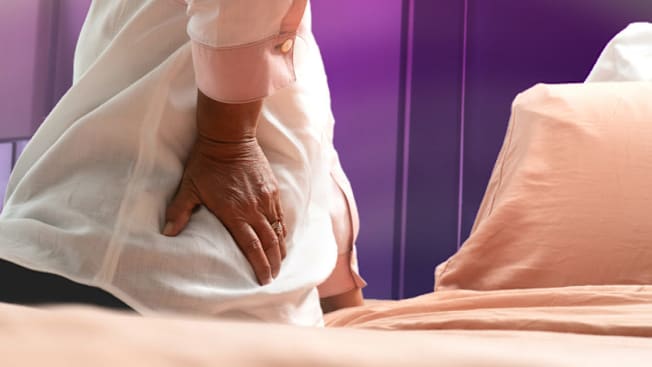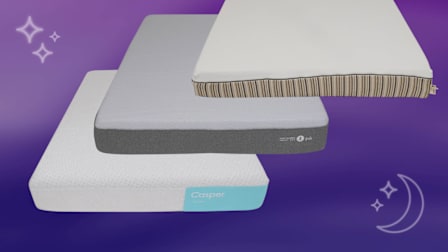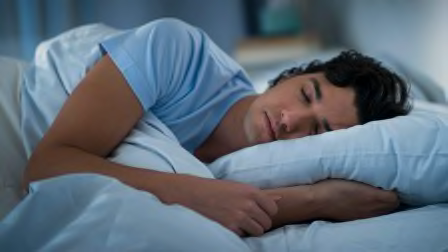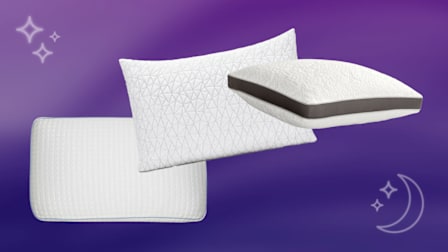Best Mattresses for Hip Pain
If an achy hip is keeping you awake, the right mattress (and these expert tips) might be the ticket to peaceful, restorative sleep
When you shop through retailer links on our site, we may earn affiliate commissions. 100% of the fees we collect are used to support our nonprofit mission. Learn more.

Bedtime has a way of turning up aches and pains. Joints that might be mildly annoying by daylight seem to shout for attention once you lie down. It’s a vicious cycle: Your body needs high-quality rest (studies show that a longer night’s sleep can help joint pain), but you can’t rest because you’re hurting.
If you’re living with hip pain, you might find that sleeping is a challenge. But, says New York City physical therapist Tracey Vincel, founder of Knosis Wellness & Physiotherapy, finding comfort in bed actually starts in your waking hours: “Sleep is not an independent thing. In PT, we look for the patterns of movement that are creating the problem.”
Best Sleep Setup for Hip Pain
Certain positions can put extra strain on your hip, so it’s a good idea to be deliberate about the way you sleep. You’ll want to avoid sleeping on your stomach. Michelle Drerup, director of behavioral sleep medicine at the Cleveland Clinic Sleep Disorders Center, says this position forces the spine into an unnatural curve and can put significant strain on the hips and lower back.
“Try to sleep on your side with a pillow between your knees,” Drerup says. “That helps keep your hips aligned and reduces strain on the lower back.”
Physical therapist Karen Gstalder-Dring, of Irvington, N.Y., says a longer pillow is a good choice: “You want to have that pillow underneath the full length of the leg, not just under your knee, because that could cause your hip to rotate.” Taller people may need a king-size pillow.
Drerup says sleeping in the fetal position can also be a good option: “Curling up on your side with knees drawn toward your chest can open up the hip joint, alleviating pressure.”
You might be wondering if it’s even possible to control your sleep position. Aren’t we at the mercy of our unconscious when we’re out cold? There are tricks: Some pros suggest creating a “disturbance” by sewing a super ball or even a tennis ball into your pajamas, which will let you know if you shift into a less-than-optimal position. Gstalder-Dring has an easier—if funnier—suggestion: “You can tape a maxi-pad onto the outside of your clothes. This gives you a little biofeedback,” she says—enough to remind you to roll onto your side if you’ve found yourself on your stomach or back.
Best Mattresses for Hip Pain
Chris Winter, sleep medicine specialist and host of the podcast Sleep Unplugged, recommends medium-firm mattresses for folks with hip pain. He warns against very firm mattresses, because hard mattresses don’t let your hips sink in when you’re on your side. This disrupts alignment and can potentially increase discomfort. Also, a hard surface pressing against sensitive joints can hurt.
When it comes to mattress material, some experts we’ve talked to say that the cushier surface of a foam mattress can ease aching hips. Casper’s The One mattress is a foam option with very good side-sleeper support for people of all sizes.
If you don’t like the conforming nature of some foam mattresses, check our mattress ratings for innerspring or adjustable air options with great support scores for side sleepers.
To achieve the feel you want, you can always add a mattress topper. Or consider a mattress with a built-in pillow top, to minimize pressure. The Avocado Green Pillowtop offers 2 inches of extra plushness and scores well for side sleepers. Here’s a closer look at how these two picks perform in our lab tests:
Best Pillows for Side Sleepers
Experts advise that thicker pillows—at least 5 inches thick—are best for side sleepers. But if you have a softer mattress, you may want a bit less loft in your pillow because your body sinks deeper than your head. Conversely, a firmer mattress calls for a slimmer pillow.
Physical build matters too. “You want to think of pillows as taking up the negative space between your body and the mattress,” Gstalder-Dring says. “So if you’re somebody who’s very, very broad and you’re a side sleeper, you’re going to want a higher pillow.”
The PureLux Simply Cool Memory Foam pillow is a top-rated option for side sleepers. If you want to be able to customize, consider an adjustable pillow like the Coop Sleep Goods The Original, which comes with extra foam, so you can add or remove filling. Here’s a detailed look at how these pillows performed in our lab tests:
Editor’s Note: A version of this article also appeared in the March 2025 issue of Consumer Reports magazine.






























